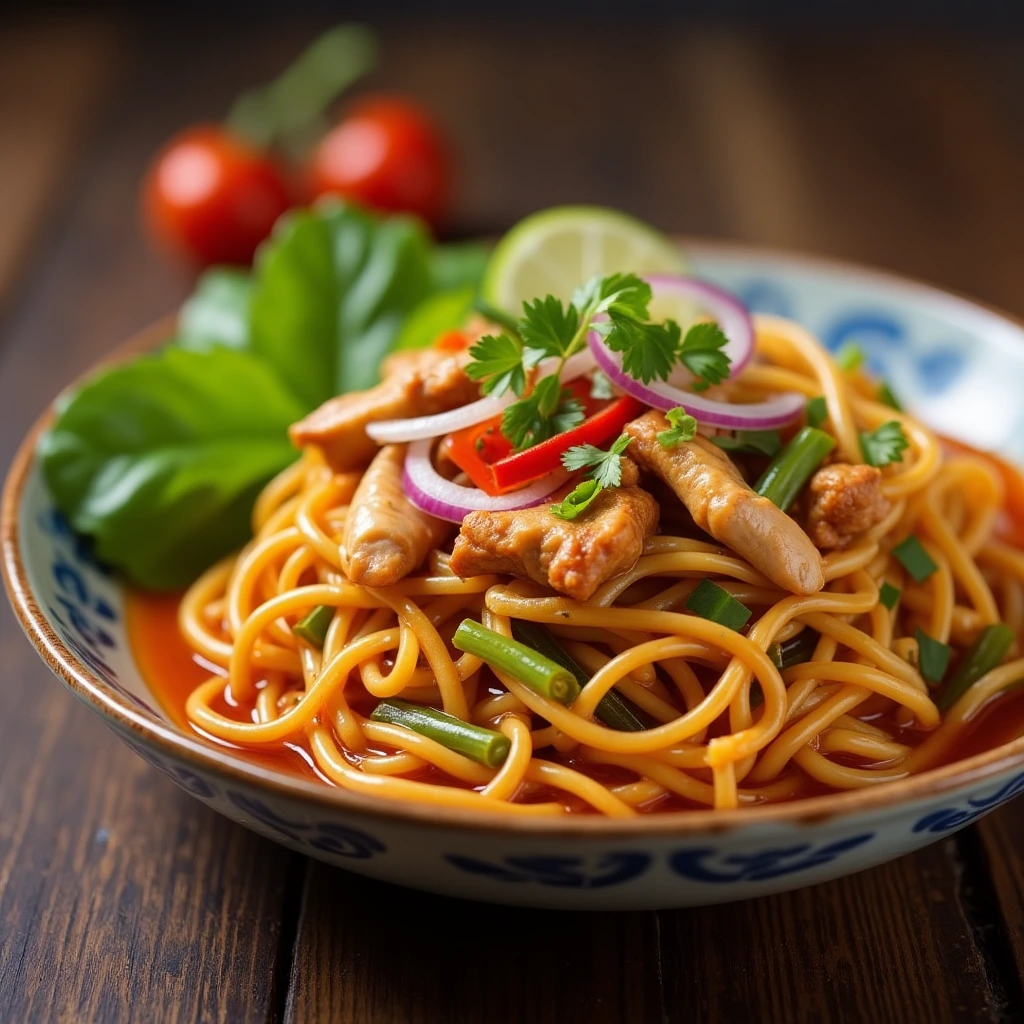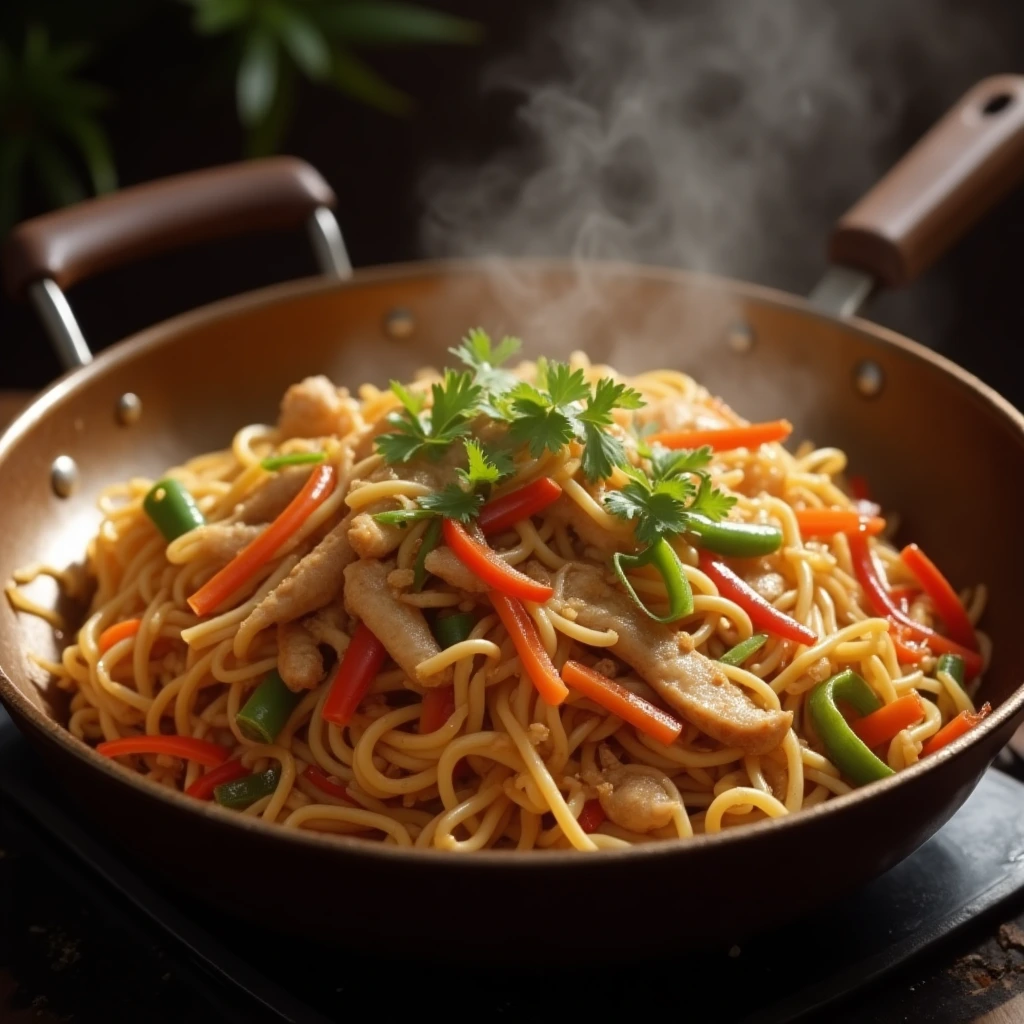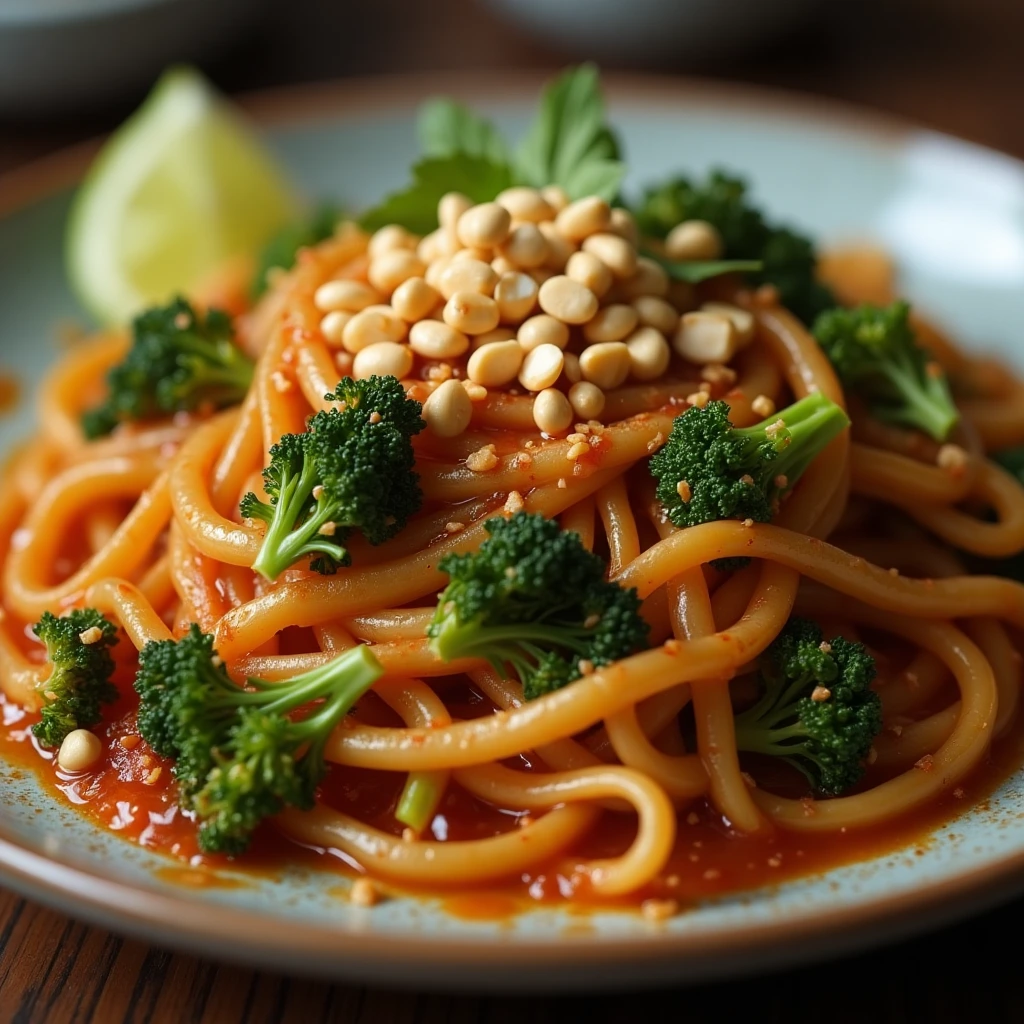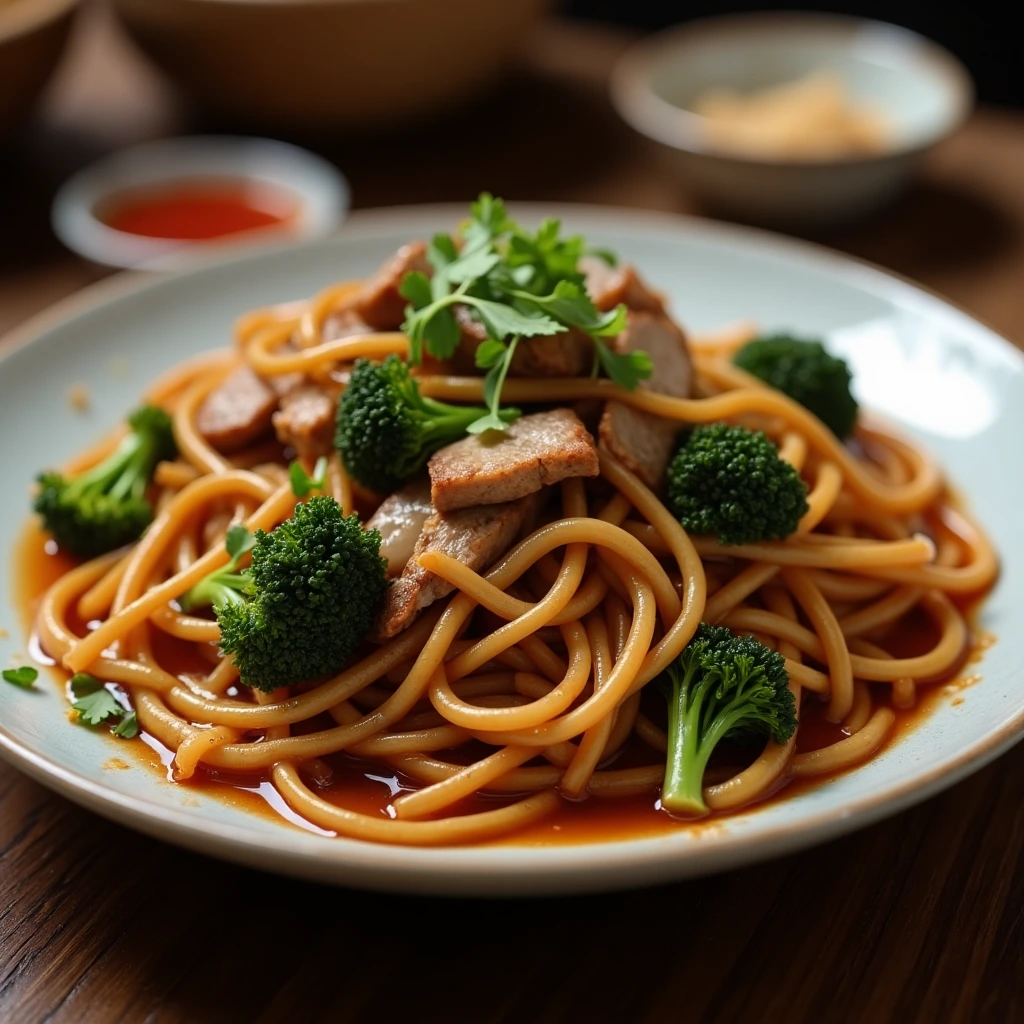Phat Si-Io Recipe: How to Make Authentic Thai Stir-Fried Noodles at Home
If you love bold, savory flavors, mastering an authentic Phat Si-Io recipe is a must. This popular Thai stir-fried noodle dish combines wide rice noodles, a rich soy-based sauce, and fresh vegetables to create a meal that’s both satisfying and easy to prepare at home. Often enjoyed as a staple of Thai street food, Phat Si-Io (also known as Pad See Ew) offers a perfect balance of sweet and salty notes with a delightful smoky aroma. In this guide, you’ll discover simple steps and essential tips to make your own delicious Phat Si-Io, even if you’re a beginner in Thai cooking. Let’s dive into the flavors of Thailand together!

What is Phat Si-Io? Understanding the Dish and Its Origins
What Does Phat Si-Io Mean?
Phat Si-Io, often known internationally as Pad See Ew, is a traditional Thai stir-fried noodle dish. The name « Phat Si-Io » translates to « stir-fried soy sauce, » which perfectly describes the dish’s signature flavor. It’s a comforting and flavorful dish made with wide rice noodles stir-fried in a wok with a combination of soy sauce, vegetables, and your choice of protein.
Ingredients That Make It Authentic
To make an authentic Phat Si-Io, the key ingredients are:
-
Sen Yai noodles (wide rice noodles), which give the dish its signature chewy texture.
-
Soy sauce (both light and dark) provides the rich and savory base.
-
Chinese broccoli (Gai Lan) adds freshness and crunch, balancing the richness of the soy sauce.
-
Oyster sauce enhances the overall depth of flavor, giving it a slightly sweet taste.
The History of Pad See Ew (Phat Si-Io)
Phat Si-Io is a popular dish in Thai street food culture and is beloved by locals and tourists alike. The dish originated in Thailand but is now widely enjoyed in Thai restaurants around the world. It’s known for its deep, savory flavor and satisfying texture, and is a go-to comfort food for many. Phat Si-Io has also become a symbol of Thai stir-fry dishes that combine simplicity with rich, flavorful ingredients.
Essential Ingredients for Phat Si-Io: The Key Components of the Dish
Wide Rice Noodles (Sen Yai)
The base of Phat Si-Io is the wide rice noodles, known as Sen Yai in Thai. These noodles are thick, chewy, and ideal for stir-frying. They absorb the rich soy sauce and other seasonings beautifully, giving you that perfect, satisfying bite. If you can’t find Sen Yai noodles, you can use any wide rice noodles as a substitute, though they may not provide the same authentic texture.
Soy Sauce (Light and Dark)
In Thai cooking, the balance of flavors is key, and soy sauce plays a vital role. Phat Si-Io requires both light soy sauce and dark soy sauce. The light soy sauce provides saltiness, while the dark soy sauce gives the dish its rich, deep color and slightly sweet flavor. Together, they create the savory base that makes this dish so irresistible.
Chinese Broccoli (Gai Lan)
Chinese broccoli (Gai Lan) is a must-have in Phat Si-Io. It’s similar to regular broccoli, but with a more tender and slightly bitter taste. This veggie adds texture and balance to the dish, complementing the savory soy sauce and adding a nice crunch.
Meat Options: Chicken, Beef, or Tofu
Phat Si-Io can be made with your choice of protein. Traditionally, chicken and beef are used, but for a vegetarian option, tofu works wonderfully. Choose your protein based on your preference, but ensure that it’s thinly sliced for quick stir-frying.
Step-by-Step Guide: How to Make Authentic Phat Si-Io at Home

Preparing the Ingredients
Before you start cooking, make sure all your ingredients are ready. Here’s what you need to do:
-
Slice the protein (chicken, beef, or tofu) thinly so it cooks quickly.
-
Chop the Chinese broccoli into bite-sized pieces, keeping the stems and leaves separate as the stems take a little longer to cook.
-
Soak the rice noodles in warm water for about 30 minutes (or follow package instructions if using dried noodles). Drain them well before using.
Stir-Frying Techniques
A wok is the best tool for stir-frying Phat Si-Io because it allows the ingredients to cook evenly at a high heat, creating that iconic « charred » flavor. Here’s the technique:
-
Heat a tablespoon of oil in a hot wok.
-
Add your protein and stir-fry until cooked through.
-
Add the garlic (if using), followed by the Chinese broccoli stems. Cook for 1-2 minutes.
-
Add the noodles and toss everything together. Pour in your soy sauce, oyster sauce, and a pinch of sugar to bring the dish together. Stir-fry on high heat for a few minutes until the noodles are nicely charred.
Assembling the Dish
Once everything is combined, give the dish one final stir. If you like, add a squeeze of lime or sprinkle crushed peanuts on top for extra flavor. Serve immediately!
Optional Garnishes
-
Crushed peanuts: Adds a bit of crunch and extra flavor.
-
Lime wedges: Squeeze fresh lime over the dish for a zesty kick.
-
Chili flakes: If you prefer some spice, sprinkle some chili flakes over your Phat Si-Io.
Tips and Tricks for Perfecting Your Phat Si-Io
Perfecting the Balance of Flavors
Phat Si-Io is all about balance. Taste your dish before serving and adjust the seasoning. If it’s too salty, add a little sugar to balance it out. If it’s too sweet, add a touch more soy sauce. Finding that sweet spot between salty, sweet, and umami is key.
Wok Tips for Beginners
Stir-frying in a wok can be intimidating, but with the right technique, it’s easy. Ensure your wok is hot enough before adding the oil, as this prevents the ingredients from sticking. Keep the ingredients moving constantly to avoid burning.
Avoiding Common Mistakes
-
Overcooking the noodles: Don’t over-soak or overcook your noodles. They should be just soft enough to absorb the sauces.
-
Too much soy sauce: Adding too much soy sauce will make the dish too salty. Always start with less and add more as needed.
Serving Phat Si-Io: Best Pairings and Variations

Serving Ideas
Phat Si-Io is often served as a standalone dish, but it pairs well with a side of Thai spring rolls or Thai cucumber salad. You can also enjoy it with a refreshing Thai iced tea or beer.
Different Variations to Try
-
Vegetarian Phat Si-Io: Substitute tofu for meat and add more vegetables like carrots or bell peppers.
-
Spicy Phat Si-Io: Add sliced chilies or chili paste to give your stir-fried noodles an extra kick.
Serving for Different Occasions
Phat Si-Io is versatile and perfect for any occasion. It can be a quick weeknight meal or a great dish for a dinner party or family gathering. It’s easy to make in large batches, so it’s great for sharing.
Conclusion
Making Phat Si-Io at home is easier than you might think! With the right ingredients and techniques, you can enjoy this authentic Thai stir-fried noodle dish whenever you crave it. Whether you’re new to Thai cooking or a seasoned pro, this recipe is sure to satisfy your taste buds. So grab your wok, gather your ingredients, and get ready to enjoy a truly delicious homemade meal!

